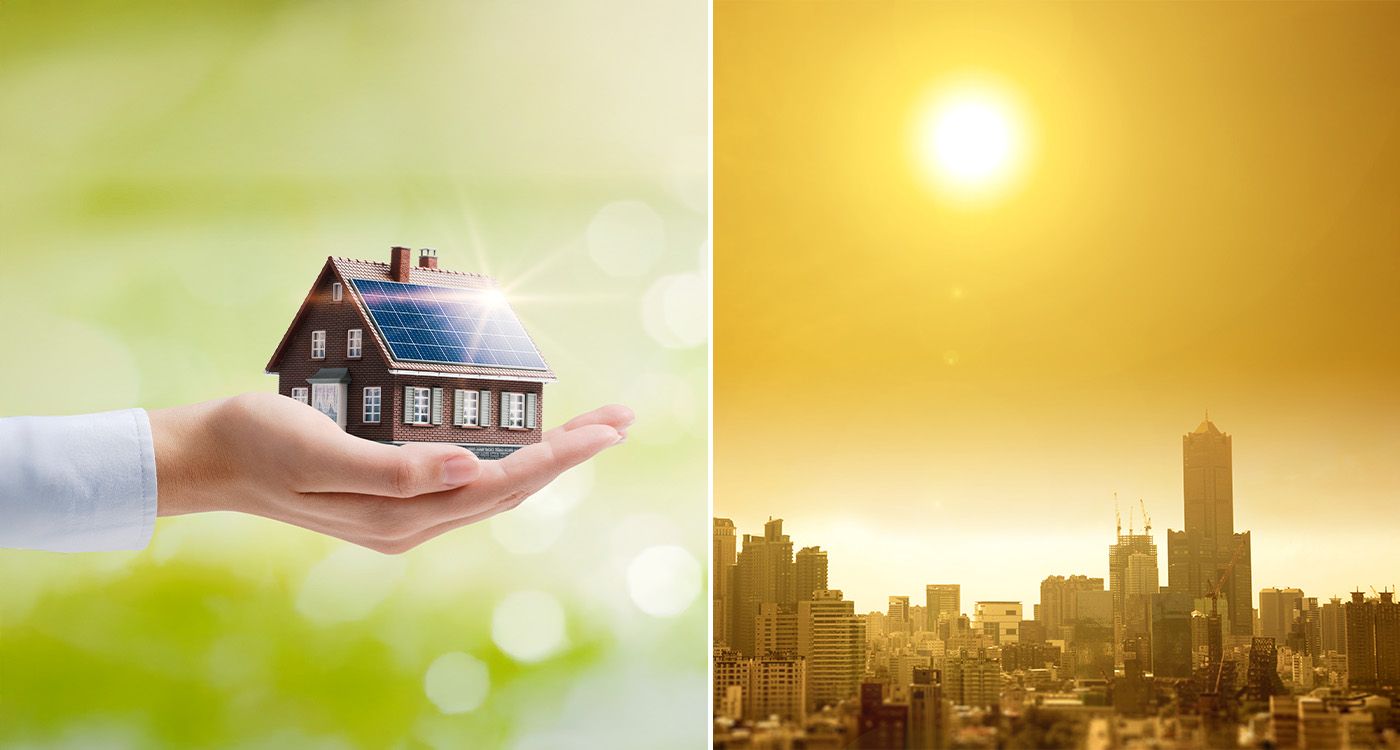
As heatwaves intensify, urban planning and building design are becoming critical. In Lebanon, poor urban planning and inadequate insulation worsen overheating, while passive solutions can reduce its impact and save energy.
Heat is no longer just a summer inconvenience. With extreme heatwaves becoming more frequent, it is now a risk factor for health, the economy and quality of life.
In a country like Lebanon, where urbanization has surged without climate adaptation planning, heatwaves often become an ordeal. Many buildings are made of heat-retaining materials, poorly insulated, lacking green spaces and oriented without considering sun exposure. Result: interiors become furnaces by early afternoon, and nights are no longer sufficient to cool walls.
This situation weighs heavily on residents. To cope, most rely on air conditioners or fans, increasing demand on a electricity supply that is already unstable. In this context of energy shortages, every degree of cooling comes at a high price: blackouts, noisy generators and soaring bills. Yet studies show that building design and urban layout can significantly reduce overheating without excessive energy use.
Passive solutions are at the heart of this approach. They aim to limit heat gain and improve thermal comfort through smart use of materials, building orientation and immediate environment. Thermal insulation is the first step: properly insulated walls and roofs slow heat penetration. Reflective paints or light-colored roofs reduce solar absorption. Sunshades, shutters and exterior blinds block direct sunlight, limiting indoor heating.
Cooling and Protecting Through Greening
Vegetation plays a dual role: providing shade and cooling air through evapotranspiration; the same process by which plants release moisture. A tree-lined street can feel several degrees cooler than a sun-exposed paved one. Green roofs and façades – still rare in Lebanon, add insulation and create urban cool zones. These features are not just aesthetic; they also reduce heat stored in concrete and asphalt, which radiates back into the air at night.
Adapting urban planning also means rethinking the orientation of new buildings to optimize natural ventilation. Air currents can be harnessed if structures are positioned to channel them. In some Mediterranean regions, historic towns offer remarkable examples: narrow streets to reduce direct sunlight, light-colored façades, wooden shutters and shaded courtyards: all designed in a time before air conditioning, yet perfectly suited to resisting heat.
In Lebanon, such principles are rarely applied in new construction, often driven by short-term economic priorities. Developers favor floor space over thermal quality, and urban greenery is frequently sacrificed for parking lots or new roads. In the long run, this lack of strategy drives up energy costs and degrades quality of life.
Solutions Within Reach?
Architects and urban planners stress that simple measures can be implemented rapidly: planting along sun-exposed façades, installing pergolas, using local materials with high thermal resistance, and converting unused spaces into shaded areas. Even in existing buildings, improvements can be made. Painting roofs a lighter color, adding solar control films to windows or installing awnings can lower indoor temperatures by several degrees, reducing the need for air conditioning.
The issue goes beyond individual comfort. In a country where power generation is extremely unreliable and private generators supply a large share of electricity, every kilowatt-hour saved matters. Reducing dependence on cooling means less fuel burned, less pollution and a lighter load on the grid – when it works.
Fighting urban overheating is not just a matter of technology or architecture; it’s also about political will and public awareness. Municipalities can promote green public spaces, enforce insulation standards for new buildings, and protect the few existing shaded areas. For residents, adopting passive solutions is a lasting investment that improves comfort while cutting energy bills. Elsewhere, such strategies seem obvious; in Lebanon, they face inertia, vested interests and lack of urban vision. It’s as simple – and as worrying, as that.


Comments